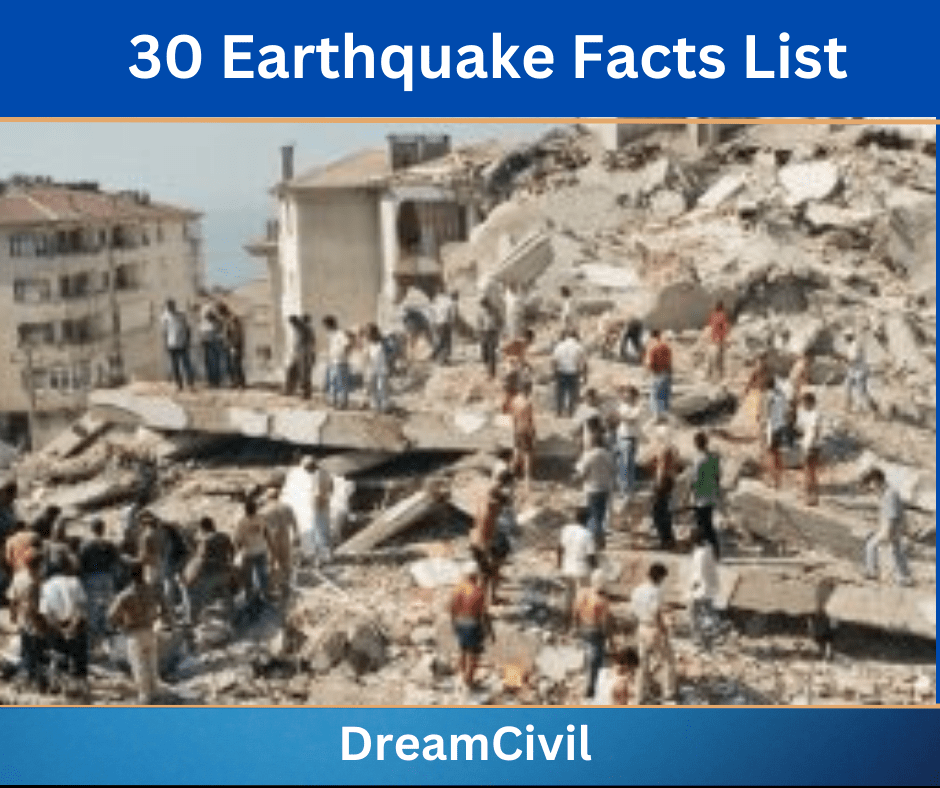Table of Contents
Earthquake has always been a severe concern for seismologists throughout the world. It seems that this field of study is a never-ending process.
Due to continuous research and study, various facts regarding earthquakes have been discovered. Some of the interesting facts about the earthquake can be summarized as follows:
1. Earthquake Facts
1. The first-ever known seismoscope was designed during China’s Han Dynasty by Zhang Heng. A seismoscope is a device that records the time of occurrence of an earthquake.
2. Robert Mallet, an Irish geophysicist and civil engineer, is regarded as the “Father of Seismology”. The research paper entitled” On the Dynamics of Earthquake” that he presented on 9th February 1846 to the Royal Irish Academy is regarded as the “Foundation of Seismology”.
3. The seismograph was invented in 1880 by John Milne.
4. Richter Scale was invented in 1935 by Charles Richter.
5. According to research, Earth has been the most seismologically active for the past fifteen years
6. Each year, about 500,000 earthquakes are detected by sensitive devices. Among these, only 10,000 can be felt, and only 100 of them pose certain damages.
7. Southern California alone experiences about 10,000 earthquakes every year, and most of the tremors are not felt by the people.
8. A lesser-known fact is that even the movement of the sun and the moon cause significant tremors deep beneath the earth’s surface.
9. The first-ever recorded earthquake in the history of civilization dates back to 1652 BC in China.
10. The first instrumentally documented largest earthquake was the one that occurred in Southern Chile on 22 May 1960. According to the United States Geological Department, its magnitude was recorded to be 9.5 and is
still regarded as the “Largest Earthquake of the 20 th Century”.
11. The Indonesian Earthquake 2004 caused trimming of the bulge of the earth, thereby making the planet more round.
12. According to geologists, the most geologically active region of Earth is the Pacific Ring of Fire which circles the Pacific Ocean as well as touches the coastal areas of North and South America, Russia, China, and Japan.
13. The earthquake that struck Shashi, China, is regarded as the “Deadliest Earthquake” ever. It occurred on 23rd January 1556 and took away nearly 830,000 lives.
14. The process of extraction of oil from the deep mines can also significantly trigger mini-tremors.
15. The movement of the tectonic plates triggers most earthquakes. At present, there are nearly 20 such active plates.
16. According to the reports of the National Earthquake Information Centre India, an average of 50 earthquakes are recorded every year.
17. The state with the maximum occurrence of an earthquake every year is Alaska. This state is struck by an earthquake of 7 magnitudes almost every year.
18. The major recorded undersea earthquake was the one that hit the Indian Ocean on 26 th December 2004. The earthquake further triggered tsunamis killing about 225,000 people.
19. The Chile Earthquake of 2010 was so strong that it entirely moved the city of Concepcion and even resulted in the shortening of Earth’s day and movement.
20. It is estimated that nearly 8,000 people are killed yearly due to the earthquake.
21. Parkfield, California, is regarded as the “Earthquake Capital of the World”.
22. It has been observed that more earthquakes hit the Northern Hemisphere than the Southern Hemisphere.
23. The earthquake that triggered the worst avalanche was the Peru Earthquake in 1970. It killed over 18,000 people.
24. The earthquake that triggered the worst landslide was the China Earthquake, of 1920, which killed nearly 200,000 people.
25. The first-ever earthquake recorded by photography was California Earthquake,1906.
26. An earthquake is estimated to release a hundred times more energy than nuclear bombs, particularly the nuclear bomb that was dropped on Hiroshima, Japan, in 1945.
27. Pools and water canals usually produce a strange smell before an earthquake due to the production of gases underneath the surface of the Earth.
28. It has been discovered that earthquakes even occur on the Moon and are known as moonquakes. They are much weaker than earthquakes.
29. The temperature of groundwater also rises during the earthquake.
30. It is believed that a pagoda shape can comparatively withstand strong
earthquakes.
| Read Also: Earthquake Resistant Building |

